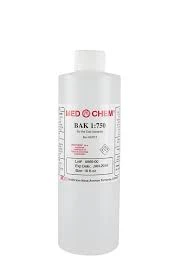poly aluminium
Understanding Poly Aluminium A Versatile Chemical Compound
Poly aluminium, often referred to as polyaluminium chloride (PAC), is an essential chemical compound widely used in various industries, particularly in water treatment, paper manufacturing, and as a flocculant in the mining industry. This article explores the significance, properties, production, and applications of poly aluminium, highlighting its contribution to environmental safety and efficiency in industrial processes.
What is Poly Aluminium?
Poly aluminium is a type of coagulant made from aluminium hydroxide and hydrochloric acid. It is a water-soluble polymeric compound that consists of chains of aluminium ions, which are positively charged. These aluminium species have a high charge density, making poly aluminium an effective coagulant. Its structure allows it to bridge between small particles in suspension, encouraging them to clump together and form larger aggregates that can be easily removed from water.
Properties of Poly Aluminium
Poly aluminium possesses several advantageous properties that enhance its effectiveness as a coagulant. It offers a higher degree of purity, lower residual aluminium content, and improved solubility compared to traditional aluminium sulfate. Its varying formulations can provide tailored solutions for specific applications. Moreover, poly aluminium exhibits a lower pH requirement for coagulation, which allows for more flexible operational conditions, making it suitable for a wide range of water qualities.
Another key property of poly aluminium is its rapid coagulation and settling effects, which can significantly improve the efficiency of water treatment processes. The versatile nature of PAC enables it to perform well in both acidic and alkaline environments, thereby making it an ideal choice for diverse applications.
Production of Poly Aluminium
The production of poly aluminium typically involves the reaction of aluminium salts, such as aluminium hydroxide or aluminium chloride, with basic ions, which can include sodium hydroxide or calcium carbonate. This process results in a range of formulations with varying chlorine content, molecular weight, and charge density, which can be tailored to meet specific end-user requirements. The careful management of the polymerization process ensures that the final product achieves optimal performance in coagulation and flocculation.
poly aluminium

Applications of Poly Aluminium
1. Water Treatment One of the primary applications of poly aluminium is in water and wastewater treatment plants. PAC effectively removes suspended solids, organic matter, and turbidity from water, enhancing its clarity and quality. It is also used in the treatment of drinking water, where it helps eliminate pathogens and contaminants, ensuring safe potable water for communities.
2. Paper Industry Poly aluminium is employed in the paper manufacturing process as a retention aid. It helps in improving the retention of fine particles and fibers, resulting in enhanced paper quality and reduced costs associated with raw materials.
3. Mining In the mining sector, poly aluminium serves as a flocculant, aiding in the separation of valuable minerals from ore. Its ability to aggregate fine particles facilitates the recovery process, making it an essential additive in mineral processing.
4. Ceramics and Textiles PAC is also used in the ceramics and textile industries for various functions, including dye fixation and as a binding agent.
5. Food and Beverage In the food industry, poly aluminium is utilized for clarification processes in juice, wine, and beer production, ensuring the final product meets quality standards.
Conclusion
In conclusion, poly aluminium is a versatile and effective chemical compound with wide-ranging applications across multiple industries. Its properties, such as high charge density, rapid coagulation, and adaptability to varying conditions, make it an essential component in water treatment, paper production, mining, and other areas. As industries continue to face challenges related to water quality and environmental standards, the use of poly aluminium is likely to expand, reinforcing its role in promoting sustainable practices and improving operational efficiencies. By choosing poly aluminium, industries can not only enhance their product quality but also contribute to environmental protection and public health.
-
Water Treatment with Flocculant Water TreatmentNewsJun.12,2025
-
Polymaleic AnhydrideNewsJun.12,2025
-
Polyaspartic AcidNewsJun.12,2025
-
Enhance Industrial Processes with IsothiazolinonesNewsJun.12,2025
-
Enhance Industrial Processes with PBTCA SolutionsNewsJun.12,2025
-
Dodecyldimethylbenzylammonium Chloride SolutionsNewsJun.12,2025





